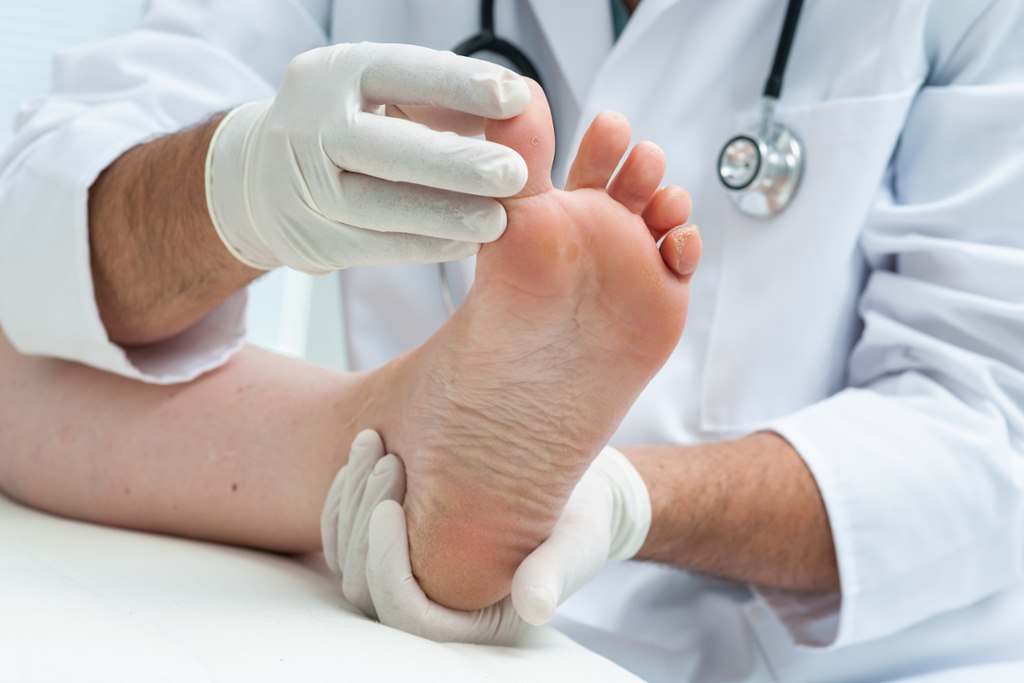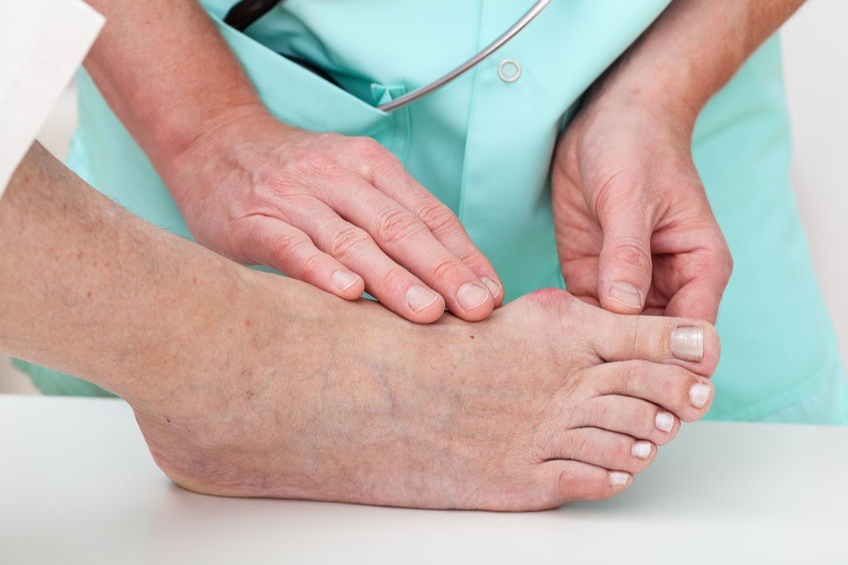Living with Bunions: Coping Strategies and Lifestyle Adjustments
Bunions, those bony bumps that form on the joint at the base of your big toe, are more than just a cosmetic concern—they can be a source of chronic pain, discomfort, and even mobility issues. Living with bunions means facing daily challenges, from selecting the right footwear to managing pain during routine activities. In our comprehensive guide, “Living with Bunions: Coping Strategies and Lifestyle Adjustments,” we aim to provide you with practical, actionable advice to help you lead a more comfortable and active life despite your bunions. Whether you’ve recently been diagnosed or have been coping with bunions for years, this guide is designed to empower you with knowledge and solutions that can make a difference.
Understanding Bunions
A bunion, medically known as Hallux Valgus, manifests as a bony protrusion at the base of the big toe. It occurs when some of the bones in the front part of your foot move out of place, causing the tip of your big toe to get pulled towards the smaller toes and forcing the joint at the base of your big toe to stick out. The skin over the bunion might be red and sore, making footwear uncomfortable and walking an ordeal in severe cases. Understanding the structural changes that lead to bunions is crucial for effectively managing symptoms and finding the right treatment options. Various factors, including genetics, inappropriate footwear, and certain types of arthritis, can contribute to their development, making it a multifaceted issue to address.

Bunions Treatment
Footwear Recommendations for Bunion Relief
Finding the perfect pair of shoes plays a crucial role in both easing bunion discomfort and preventing the condition from worsening. Footwear that allows your toes plenty of room can dramatically lessen the pressure on your bunion, leading to relief from pain. When shopping for shoes, look for styles with a broad toe area, crafted from soft leather, and featuring adjustable elements such as straps or laces to guarantee a snug yet comfortable fit that conforms to your foot’s unique contour. Steer clear of pointy high heels and narrow-fitting shoes since they can increase bunion discomfort by squeezing the toes together uncomfortably. Considering orthopedic footwear or tailor-made insoles can make a significant difference as well, providing the extra support and relief needed for your daily life. Making informed decisions about your shoe selection is a key measure you can take to manage bunion discomfort more successfully.
Enhancing Comfort with Orthotic Supports
Discover the added comfort and reduced pressure on bunions through the strategic use of orthotic supports. These supports range from readily available over-the-counter models to bespoke inserts crafted by a podiatrist, all aimed at recalibrating your foot’s structure, evenly dispersing pressure, and delivering targeted cushioning. For those dealing with bunions, orthotics serve as a pivotal tool in realigning the foot to mitigate one of the primary causes of discomfort associated with bunions. While you may find immediate ease with off-the-shelf orthotics, opting for custom-fitted ones that adhere to your foot’s unique shape can elevate your comfort and overall well-being to new heights. However, it’s imperative to seek the advice of a healthcare expert to identify the orthotic solution that best matches your needs.
Managing Bunions with Targeted Exercises
For individuals dealing with bunions, integrating targeted stretches and strength-building exercises into one’s daily activities can offer numerous advantages. These exercises are designed to enhance the flexibility and muscle power in your feet, which can lead to relief from bunion discomfort and help in curbing the condition’s advancement.
One straightforward and effective technique involves stretching the big toe gently back into its correct position, holding this stretch for a few moments before releasing and repeating the process multiple times. Furthermore, engaging in toe curls and exercises that offer resistance can fortify your feet’s muscles. Exercises aimed at strengthening your foot’s arch, such as using your toes to grab marbles, are also beneficial for maintaining correct foot posture.
It’s crucial to seek advice from a medical expert or a physiotherapist before starting any new exercise regimen to ensure it’s tailored to your needs and safe given your specific health situation. Consistently performing these recommended exercises can lead to noticeable improvements in foot functionality and a reduction in bunion-induced discomfort.

Bunions Treatment Service
Effective Strategies for Bunion Pain Relief
Living with bunions can significantly impact your daily comfort and ability to stay active. Fortunately, there are various strategies to alleviate bunion-related discomfort effectively. Implementing these strategies can dramatically enhance your day-to-day well-being and enable you to maintain an active lifestyle.
A simple yet effective method is the regular use of ice on the affected area to minimize inflammation and soreness. Ensure the ice is covered with a cloth to avoid skin irritation and apply it for 15-20 minutes multiple times throughout the day, particularly after any vigorous activities.
For pain and inflammation control, over-the-counter medications like ibuprofen or naproxen can be beneficial. It’s vital, however, to seek advice from a healthcare professional before starting any new medication to confirm it fits your health needs.
Utilizing bunion pads or moleskins can also offer significant relief by shielding the bunion from friction with footwear, thus preventing blisters and additional irritation. For individuals dealing with severe pain, a healthcare provider may recommend corticosteroid injections. These injections can offer temporary relief by targeting inflammation directly at the bunion site.
Another key element in managing bunion pain is maintaining a healthy weight. By doing so, you reduce the pressure exerted on your feet, lessening the discomfort caused by bunions.
Incorporating these pain relief strategies into your routine can make a notable difference in your life, allowing you to engage in daily activities with much less pain.
Managing Bunions Through Daily Habits
Taking active steps towards modifying one’s lifestyle is key to effectively managing bunion discomfort. Small tweaks in everyday practices can substantially lessen the burden on your feet, thereby decelerating bunion progression and boosting your general well-being. Focusing on gentle, low-impact activities like swimming, biking, or even a simple stroll can keep you lively while simultaneously reducing the strain on your feet. It’s also wise to dodge activities known to aggravate bunion discomfort, for instance, standing for extended durations or participating in vigorous sports. Another vital measure is ensuring you stay within a healthy weight range since excess weight can intensify the pressure on your feet, aggravating the symptoms of bunions. Additionally, regular foot care, encompassing keeping your feet clean and moisture-free, closely monitoring for any blisters or foot-related issues, and trimming your nails correctly, plays a crucial role in averting further issues. Adopting these lifestyle adjustments into your everyday life can significantly aid in managing your bunion symptoms and preserving the health of your feet.
Professional Treatments
When self-management and lifestyle adjustments are not enough to alleviate bunion discomfort, it may be time to consider professional treatments. Podiatrists and orthopedic specialists offer a range of interventions that can address the structural issues contributing to bunions and provide significant relief. One common approach is splinting or bracing, which involves wearing a device at night to help realign the bones of the foot. For those with severe bunion deformities or persistent pain, surgical options may be recommended. Bunion surgery aims to correct the misaligned bones, remove the bony bump, and relieve pain. There are various surgical techniques, and the choice of procedure depends on the extent of the bunion deformity, the patient’s overall health, and their lifestyle needs. Recovery from bunion surgery can take several weeks to months, and it typically involves physical therapy to restore function and strength to the foot. Consulting with a healthcare professional is crucial to determine the most appropriate treatment approach based on the individual’s specific condition and goals.

Bunion Surgery
Managing Daily Life with Bunions
Living with bunions affects everyday life in numerous ways, from the challenge of finding suitable shoes to managing discomfort during daily activities. Selecting the right footwear is crucial; ideal shoes offer a broad toe area, sufficient support, and do not press on the bunion itself. For additional relief, individuals may benefit from custom orthotic inserts, designed to evenly spread foot pressure and lessen bunion strain. Incorporating regular breaks into periods of prolonged standing can also offer noticeable comfort improvements. By implementing these strategies, those with bunions can significantly reduce their day-to-day discomfort, enhancing mobility and the ability to engage in activities more comfortably.
Navigating life with bunions requires a combination of self-care measures, lifestyle adjustments, and possibly professional foot treatments. By understanding and applying effective strategies for pain relief, engaging in daily habits that mitigate discomfort, and considering professional treatments when necessary, individuals can achieve significant improvements in their quality of life. Staying proactive about foot health, selecting the right footwear, and maintaining a healthy weight are all critical steps in managing bunions effectively. Remember, each person’s situation is unique, and consulting with healthcare professionals is essential to tailor the management approach to individual needs. Through diligent care and appropriate interventions, it is possible to live a comfortable and active life, even with bunions.
Flagstaff Foot Doctors: Anthony Rosales DPM
https://www.google.com/maps?cid=8835841318590452161
421 N Humphreys St, Flagstaff, AZ 86001, United States
(928) 774-4825
https://flagstafffootandankle.com/
